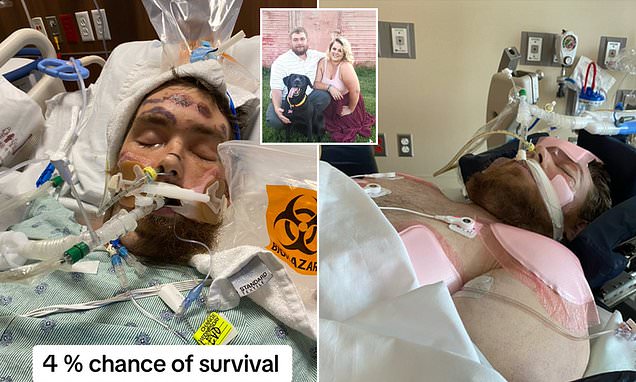The Perilous Journey from a Simple Ingrown Hair to Sepsis
Steven, a father and husband, faced a life-threatening ordeal after an ingrown hair on his leg led to a severe infection, ultimately spiraling into sepsis. His sister Michelle shared the harrowing tale through social media, revealing how a minor grooming mishap resulted in critical health complications. Known as the “silent killer,” sepsis can trigger multiple organ failure and even death if not promptly treated.
A Fight for Life Against Overwhelming Odds
The infection quickly escalated, causing septic shock that severely damaged Steven’s organs, including his heart, and led to acute respiratory distress syndrome (ARDS). With his condition critical, doctors placed Steven in a medically induced coma, intubating him to support his failing body. Despite being given only a four percent chance of survival and being declared brain dead, the resilience of his body and spirit were about to be tested.
Remarkable Recovery and the Road Back Home
Against all odds, Steven emerged from his coma a month later without brain damage, having undergone numerous life-saving treatments and surgeries. He underwent an innovative treatment involving a rotating hospital bed to enhance lung function, and surgeries to repair his heart and drain excess fluid from his chest. Now back at home, Steven’s recovery continues as he enjoys life’s simpler moments with his family, a testament to the critical importance of early sepsis detection and treatment.
Understanding Sepsis: A Critical Health Challenge
Sepsis remains a daunting healthcare challenge, affecting over 1.7 million Americans annually and resulting in nearly 270,000 deaths. It arises when the body’s response to an infection injures its own tissues and organs. Symptoms often mimic those of the flu, making early diagnosis tricky yet crucial. The condition emphasizes the importance of awareness and swift medical intervention, as delays in treatment significantly increase mortality rates.





